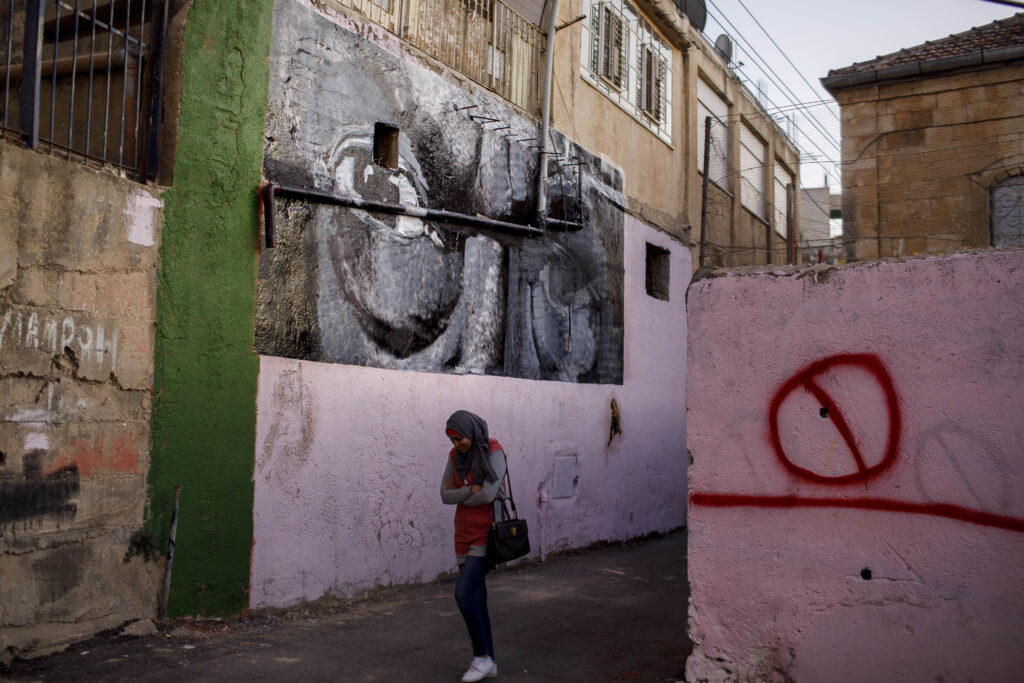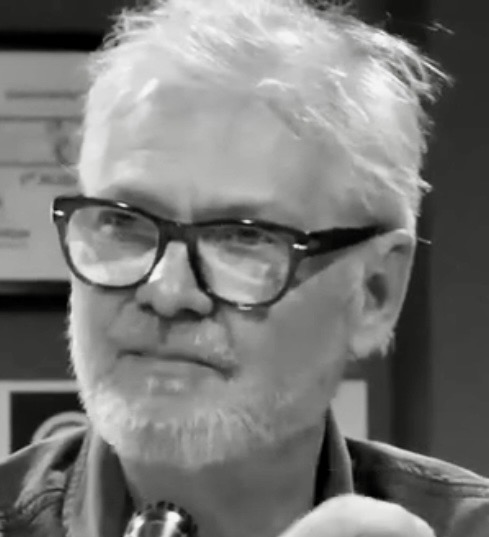
Shown above are the eyes of John Berger (1926-2017), a renowned English poet, essayist filmmaker, painter—and advocate for Palestine. His eyes are depicted in a mural in the occupied Palestinian community of Silwan in East Jerusalem.
But Berger’s eyes are only one pair of many sets painted along Silwan’s neighborhood streets. Some eyes are those of East Jerusalem’s own Palestinian dead, like Eyad al-Hallaq, a special needs young man with autism whom an Israeli border police officer killed in 2020. Others’ eyes commemorate those with whom Silwan organizers feel a close international solidarity, such as Bai Bibyaon (leader of her Indigenous tribe who sought to defend ancestral lands in the Philippines), Ghassan Kanafani, Shireen Abu Akleh, Che Guevara, Hamad Mousa (a Palestinian farmer from Akka, Palestine), George Floyd, Alex Nieto, Rachel Corrie, Malcolm X, and more.
Why are Berger’s and these eyes on the walls of buildings in Silwan? I suggest that they express a sense and belief that the “whole world is watching.” Indeed, they represent the power of the dead for the living in Palestine. They manifest what John Berger once named Palestinians’ “undefeated despair” amid decades of occupation and a hundred years of British, Israeli, and U.S. domination.
Consider the occupation. As Israeli forces occupy Silwan’s community, they also guard Jewish settlements there. Israelis’ aim is to displace and replace Silwan’s 50-60,000 residents. They invoke a “bogus archaeology” to justify this, interpreting the ancient Jerusalem sites underneath Silwan as being what a majority of archaeologists agree they are not, a biblical “City of David.” Israeli Zionists and Christian tourists relish this biblical fantasy while real-world residents of Silwan are dispossessed to create these archaeological parks.
Even if archaeological evidence proved Israeli claims (which they do not), the Jewish settlers in East Jerusalem and the “City of David” settlement are illegal by international law (Occupation Remains, 18), and the land confiscation in East Jerusalem is part of Israel’s “belligerent occupation” of Palestine. There is no justification, then, for displacing current residents, surely not for their continuous repression, as reported by Silwan’s Madaa Creative Center: “Not a day goes by where the residents aren’t rained [on] by gas bombs, sound bombs and rubber bullets during the clashes while trying to defend their existence, their lives and their land.” Overall, as historian and archaeologist Nazmi Jubeh summarizes, the plight of Silwan’s Palestinians is desperately precarious. They live below the poverty line and are crowded into homes often unfit for human habitation. Silwan has experienced almost every form of maneuver for eradication by Israel’s occupation and repression.
In painting their murals, however, the people of Silwan are also organizing.
Silwan is active: its residents mobilize themselves and international visitors, like the delegation of theological educators with whom I visited Silwan and East Jerusalem. We were hosted by Sabeel, a Jerusalem-based ecumenical liberation center. Silwan’s organizers explained to us, as they do to all visitors, their history of dispossession. They showed us their property lots reduced to rubble by Israeli demolitions. They pointed out the Jewish settler’s homes which were replacing their own. Local activists, artists, and residents showed us the mural art gracing the neighborhood streets—like the bold eyes painted throughout Silwan. This art is the fruit of solidarity between the U.S.-based public art group, Art Forces, and Silwan’s own Madaa-Silwan Creative Center. As videos at the “I Witness Silwan” site show, Silwan is home to a world movement, full of vitality—even festivity—amid resistance to occupation.
The displacement we saw being creatively resisted by residents of Silwan was supplemented by what we also knew of the occupiers’ exterminating ways. In fact, the same day as our visit in Silwan (June 3, 2025) Israeli forces were intensifying their genocide in Gaza, firing upon Gaza’s hungry people at designated food distribution points. On that single day, 90 were wounded and 27 were killed. A Haaretz investigation confirmed the intentionality of this latest phase of the Gaza genocide: “IDF Soldiers Told to Shoot Deliberately at Unarmed Civilians Waiting for Humanitarian Aid.”
Since October 7th, well over 58,573 Gazans have been killed and 92% of Gaza’s housing units have been destroyed. After just one month’s bombing, Israel dropped on Gaza some 25,000 tons of mostly US-made bombs, equivalent to the two nuclear bombs dropped in Japan. After six months it had dropped 70,000 tons on Gaza, more than the tonnage dropped in World War II on London, Dresden, and Hamburg combined.
Israel in Gaza now stands charged with “genocide” in the International Court of Justice. The charge is confirmed by Amnesty International, Human Rights Watch, and by three reports of the UN Special Rapporteur for Palestine (March 2024, October 2024, July 2025).
Genocide Studies scholars remind us that the word “genocide” names not only a horrible singular event (which it does), but also a structural process at work in peoples’ everyday living in racist and capitalist systems emergent from colonial and imperial powers (on this point, see Wolfe, Estes, Koshy).
So, maybe as we stood there in Silwan, we were watching “slow genocide” as a structural process, while nearby, Gazans were experiencing genocide as a stark and brutal event. Genocide in either form, though, is a harrowing, elongated, dehumanizing brutality.
Berger knew of Palestinians’ persistence when he wrote of their “undefeated despair.” Surely the mural eyes show an “undefeated” people, throwing back at occupiers the very gaze that Israeli surveillance and occupation impose. As Susan Greene writes in a stellar article on the eyes of Silwan, “The Israeli state has placed all Palestinians under extensive systems of surveillance, a ‘colonial gaze’ that renders the population hyper-visible as objects but invisible as subjects.” Palestinians, however, are watching, and looking back—and we the world with them.
I suspect Israelis feel the resistance from the painted eyes of Silwan. Occupiers do not like to know they are watched, to have their fancies and brutalities unmasked. Reminding us of this is the great twentieth-century African American scholar, W. E. B. Du Bois. Du Bois described how he countered the White imperial gaze of his day, how he, as a Black man gazed back at “the souls of white folk.”
I see these souls undressed and from the back and side. . . . I know their thoughts and they know that I know. This knowledge makes them now embarrassed, now furious. . . . As they preach and strut and shout and threaten, crouching as they clutch at rags of facts and fancies to hide their nakedness, they go twisting, flying by my tired eyes and I see them ever stripped—ugly, human.
To see like this—to have eyes like those of John Berger and Du Bois—is to see through the occupier’s pretensions and brutalities. It is one part of organizing against them. It is to be “undefeated.”

